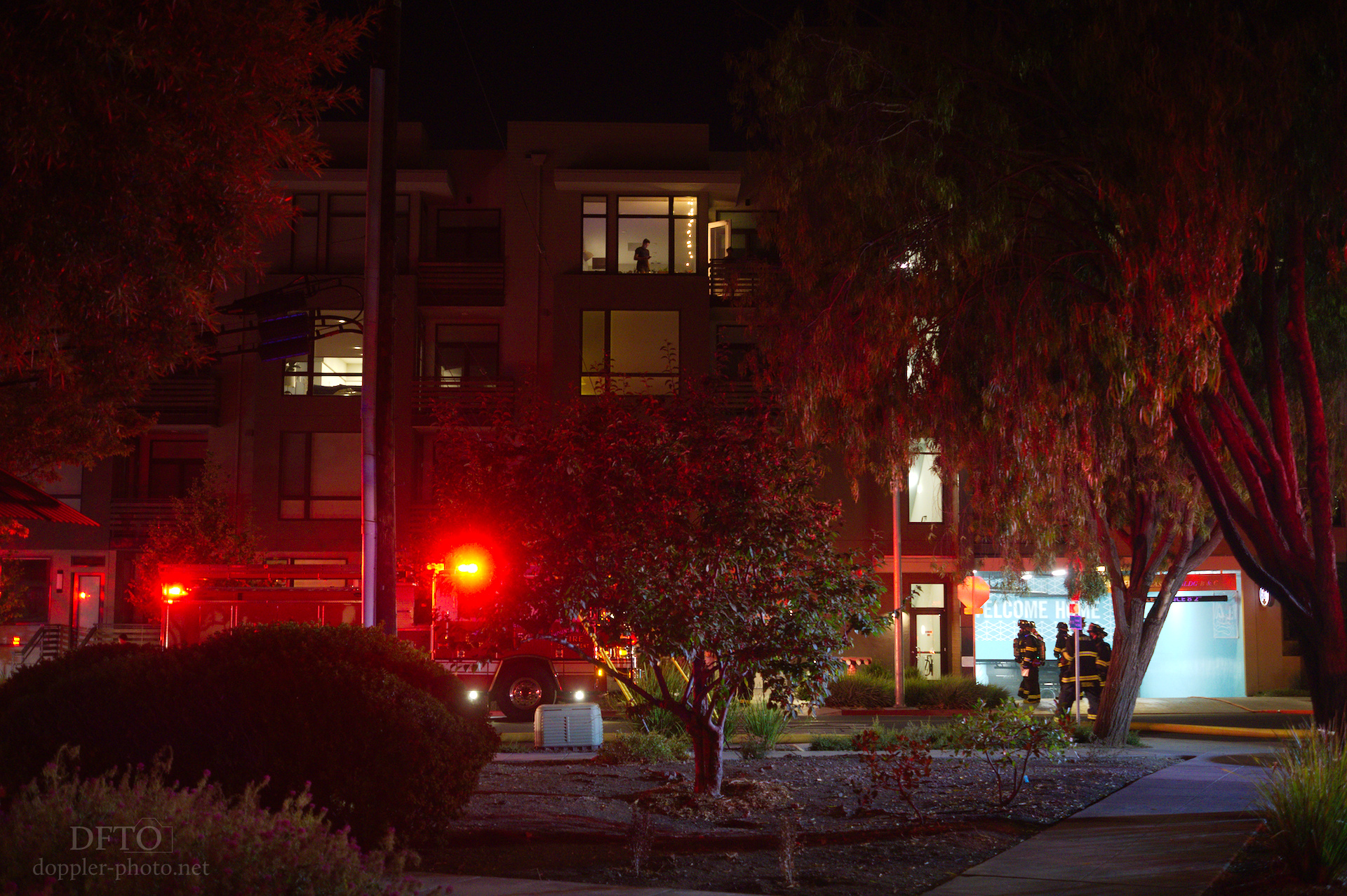
Sometimes it seems like firefighters have three main speeds: urgent, slow-but-deliberate, and still-life.
While visiting the home of a friend, it was the slow but deliberate advance of two trucks, with lights flashing but sirens silent, that first attracted my attention. I stepped outside and looked down the street to see a world bathed in red, only a few blocks away. I started to walk.
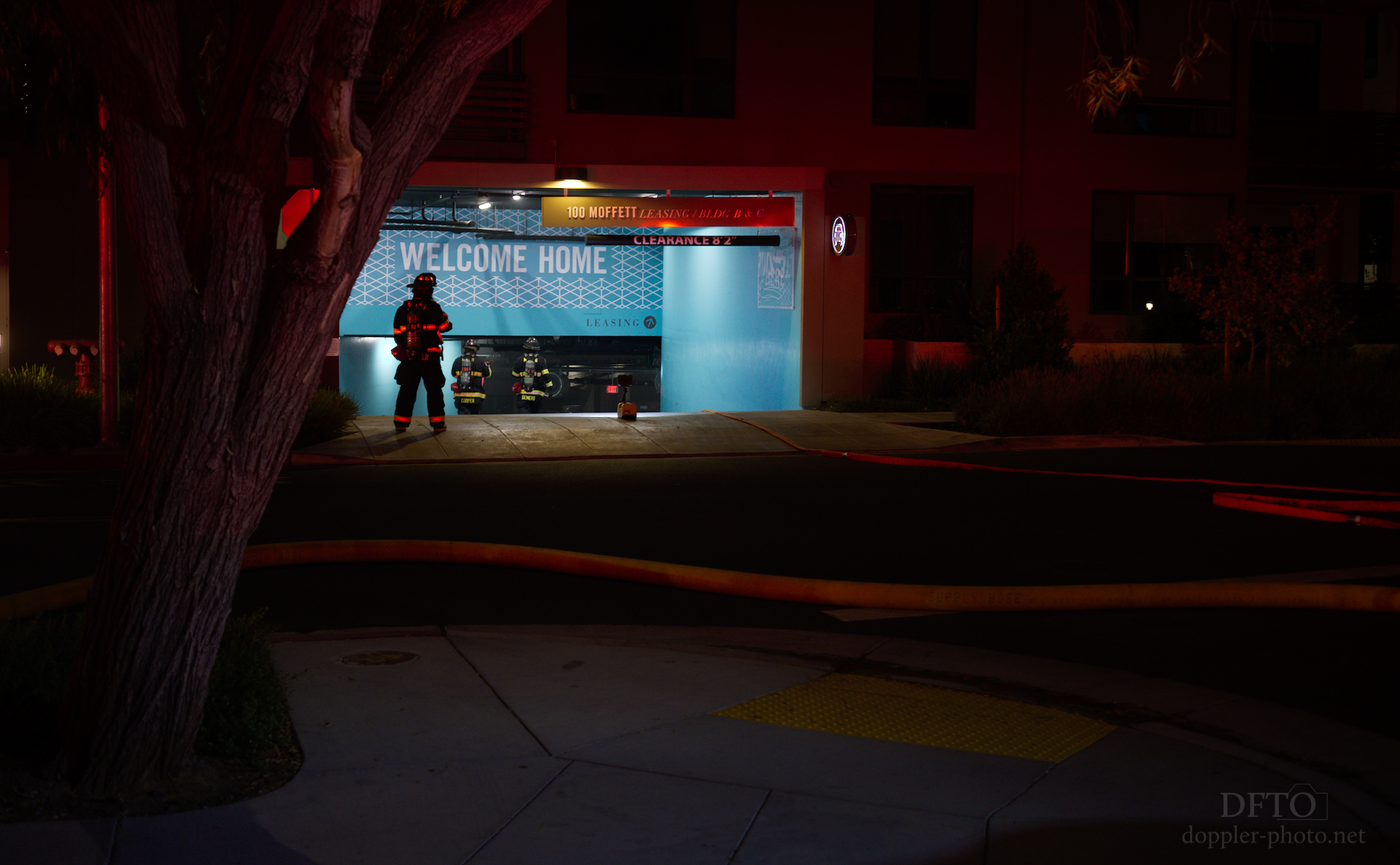
I arrived to what seemed like a stalemate. In teams of two or three, firefighters would hike down into the gaping blue maw of the garage, masks affixed, implements in hand. They would disappear around a corner. After a few minutes had passed, they would emerge again. All the while, nothing outside seemed to move.
It felt like watching a too-evenly-matched game of chess between players much better than me. With each move, the board develops, but the actual changes in the game happened behind a shroud that I couldn't decipher, try as I might.
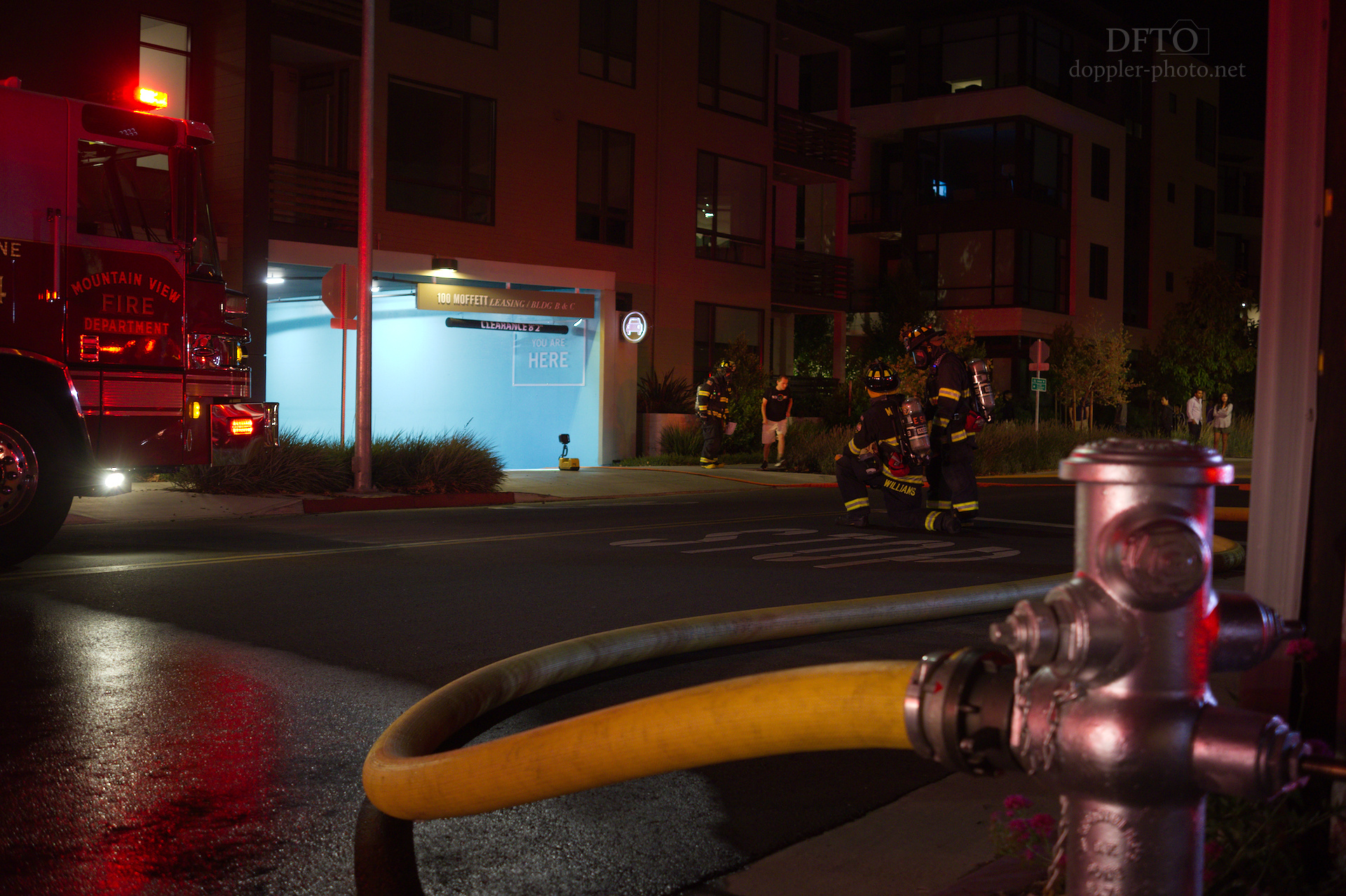
As I kept watching, and overheard snippets of chatter directed towards the various residents, I discovered that this wasn't a stalemate; it was a siege. An electrical pump had set fire to some PVC pipes, and the fumes from the burning plastic had filled the garage, and also infiltrated the hallways of the building above.
The firefighters had deployed fans to help evacuate the smoke, and to help reduce the level of environmental contamination back to acceptable levels. But their tool of choice was simply time itself — the longer you wait, the safer the building becomes.
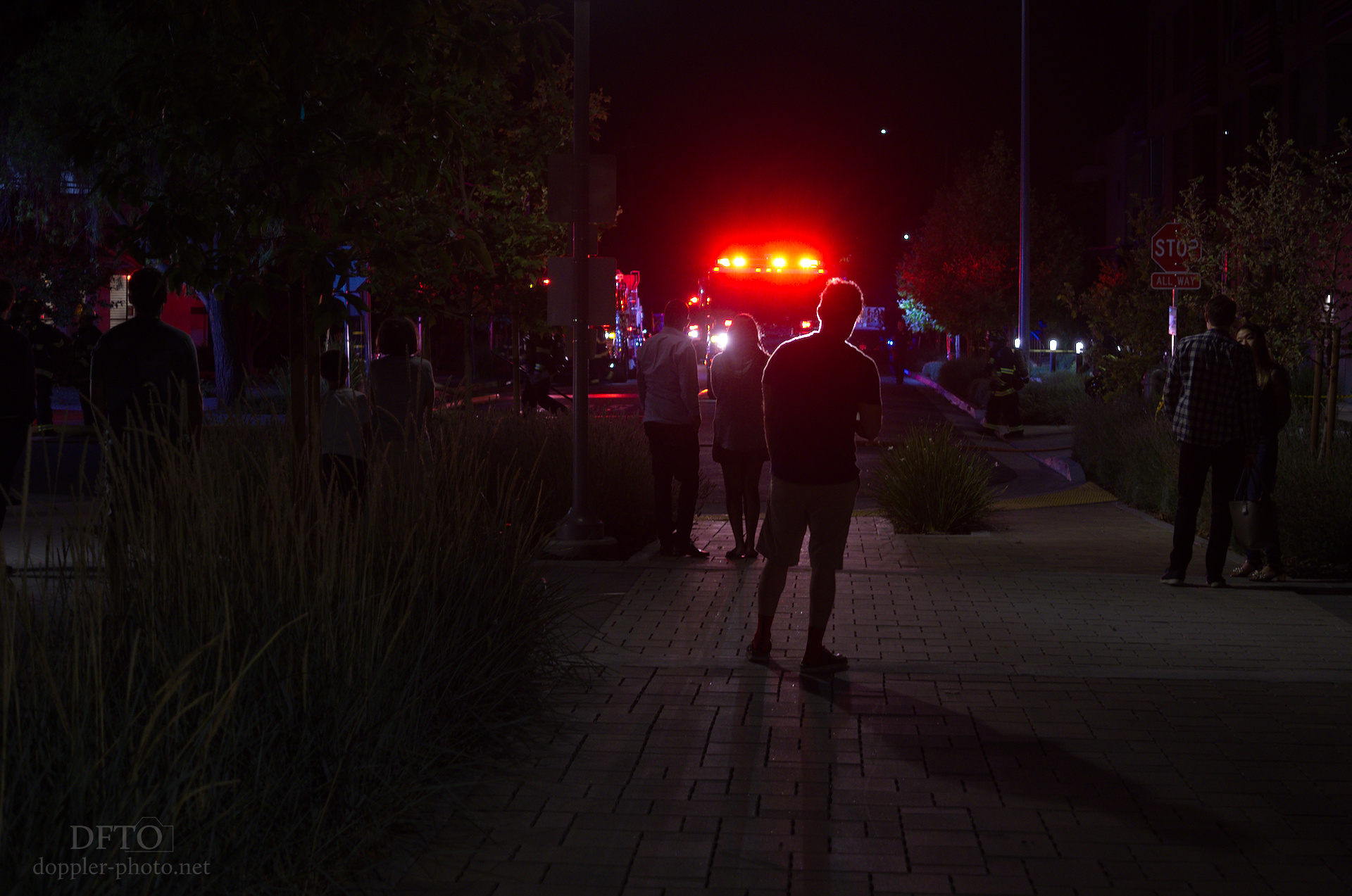
I also realized that a large part of the firefighters' role, in this particular game, was to have the residents wait also. It was, in a sense, to convince the residents to be more patient with the situation than they otherwise might. To make it easy for them to allow their own safety to take precedence, rather than whatever pressing need might otherwise convince them to re-enter the building too soon.
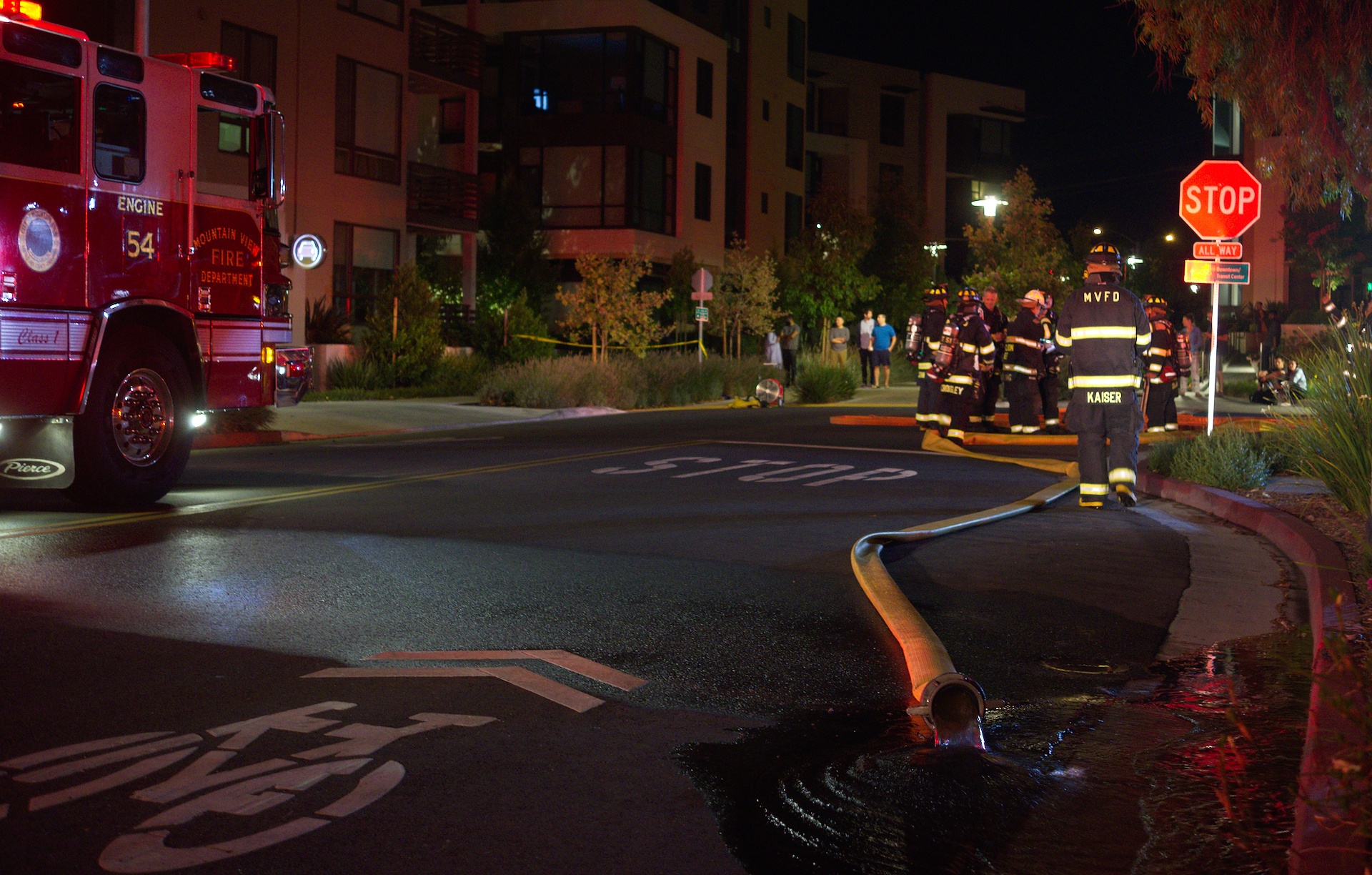
But as the game clock ticked down towards zero, the world seemed to come back to life. The main course of action switched from "wait up" to "tear down." Air tanks and helmets returned to designated homes on each of the trucks. Hoses were disconnected and drained, before being rolled back up into their storage bays. Still life gave way to motion as each unit packed up, cleared the scene, and rumbled away with the same slow deliberation.
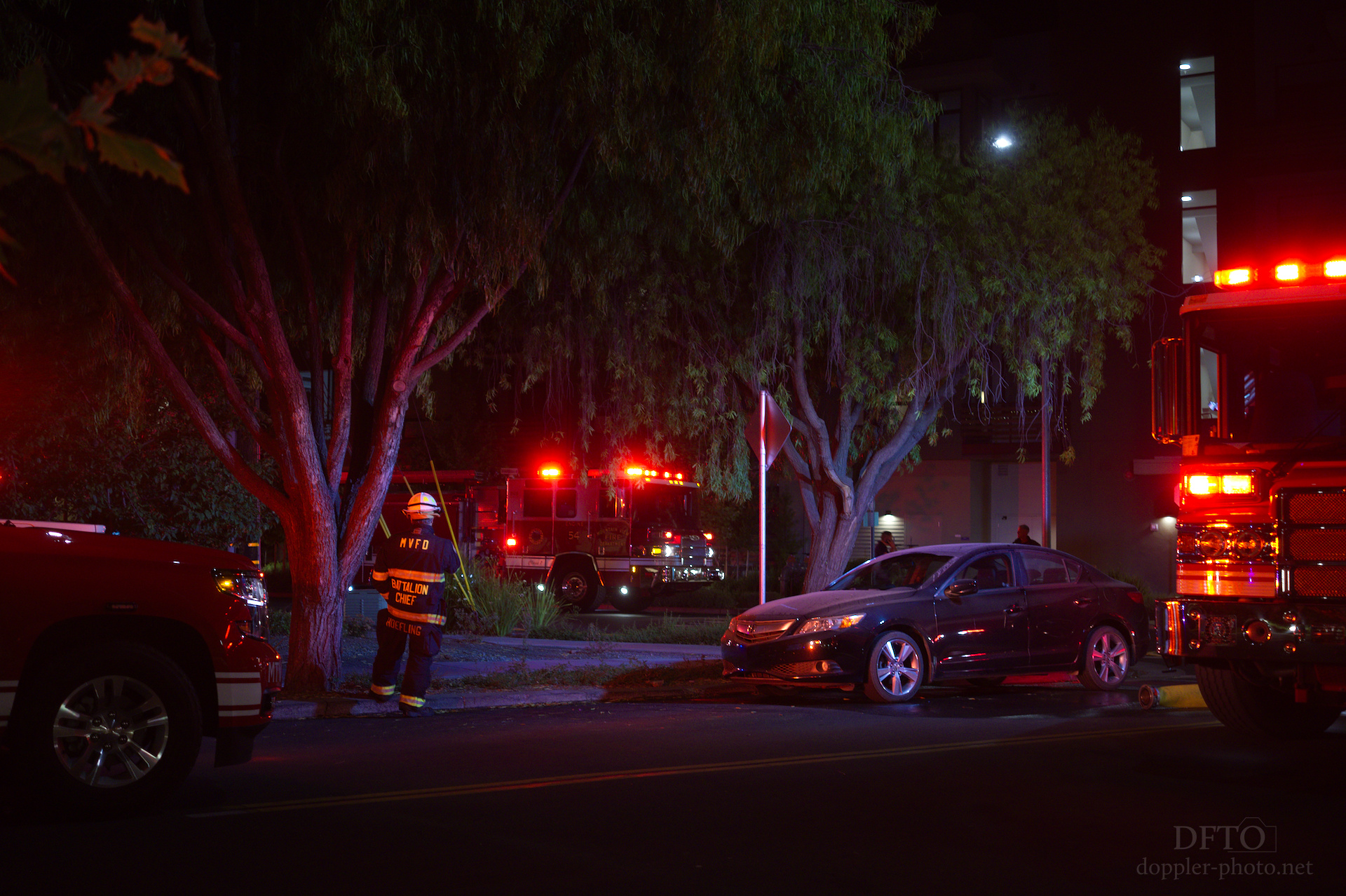
Some fires demand an urgent response. The imminent threat of loss of life or uncontrolled property damage can easily spur one towards constant action. But sometimes, the best action is to wait. Sometimes, the most appropriate response happens when time stands still.





